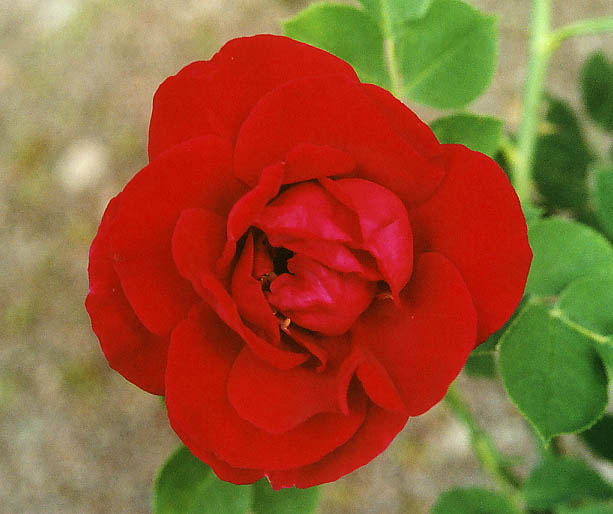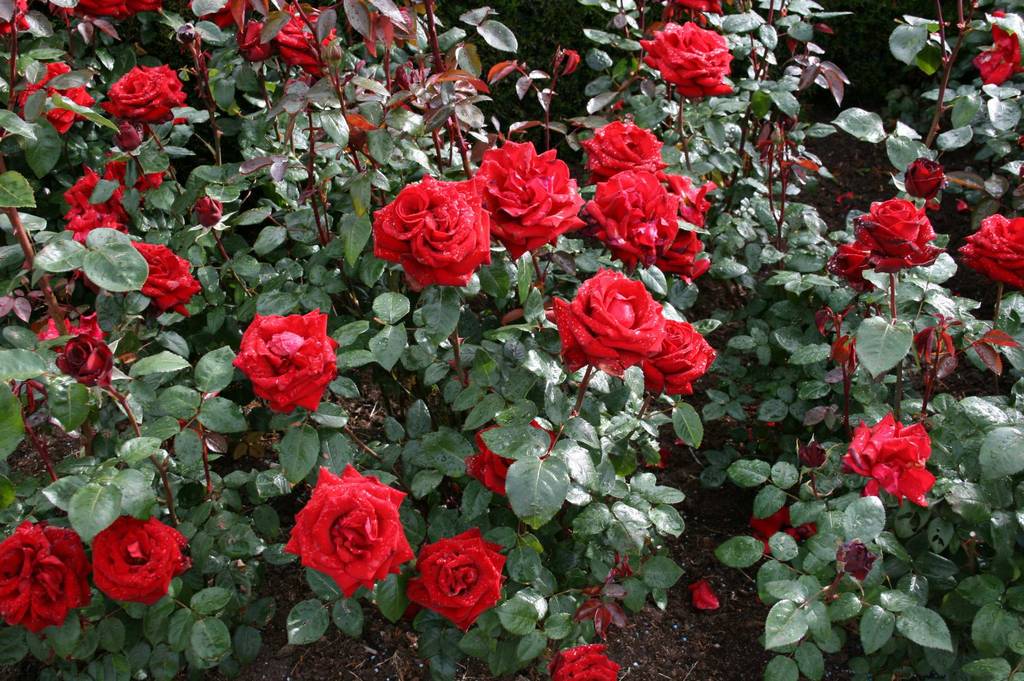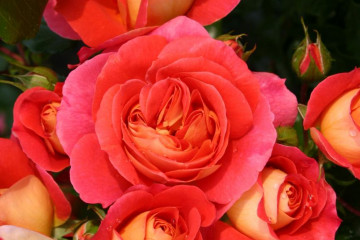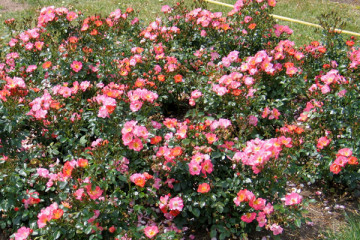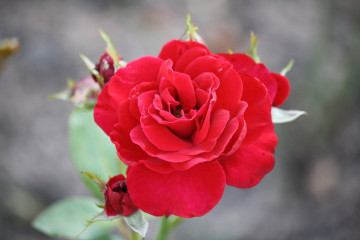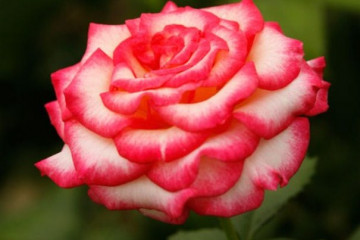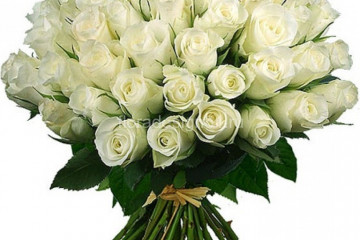Rose Cuthbert Grant from the Marshall collection
Content:
Florists of middle and northern Russian latitudes are faced with the problem of growing roses. Ordinary varieties do not withstand harsh winters: the stems freeze over, the roots rot. The varieties of Canadian roses turned out to be ideal for summer cottages and parks. The rose Cuthbert Grant won great love among them.
Rose Cuthbert Grant - what is this variety
The climate of Canada does not differ much from the Russian one: the same cold long winters, short cool summers. For many decades, breeders in Canada have struggled with the cultivation of frost-resistant varieties of roses. The result is species that can easily endure even Siberian winters. These are the most hardy species, they constitute a separate subtype.
The cultivation of the Cuthbert Grant variety began in the 19th century. from the works of the scientist W. Sanders. He began crossing interspecific varieties of hardy flowers and got hybrids that withstood a frost of -30 ° C. These are Explorer roses, which include Cuthbert Grant.
Description of the variety
This is an outstanding example of the Explorer series. Description of flowers: cup-shaped, semi-double, dark purple in color with a velvet sheen. When the yellow stamens are revealed.
Thick elastic shoots end in brushes of 3-9 flowers on graceful pedicels. The branches sag under the weight of the bunches.
The bush is upright, grows up to 120 cm. The size of the flower is 10 cm. The leaves are of a cold gray-green hue, contrasting beautifully with the buds. The aroma is long-lasting, pleasant.
Advantages and disadvantages of the variety
The plant has several advantages:
- winter hardiness. Withstands -40 ° С;
- endurance, unpretentiousness;
- blooms all season with short breaks until frost;
- well cuttings;
- do not cover for the winter;
- disease resistance;
- not afraid of temperature changes.
Of the shortcomings, a weak aroma is noted.
Use in landscape design
The variety is widely used in landscape design. Best suited for hedges. Original living fences and borders are erected from flowers.
Curly varieties are used in gazebos, entwine arches, backdrop for undersized shrubs.
Cuthbert rose is well adjacent to John Cabot and John Davis, since they have the same agricultural technique. In combination with Alexander Mackenzie, they create a multi-tiered rose garden.
Growing a flower
The plant is unpretentious, planting will not cause trouble.
The seedlings are bought in the shops of the agricultural complex. Choose healthy looking plants. They come with an open and closed root system (in bags with an earthy clod). Seedlings with open roots are planted on the same day. The closed roots are nourished, these seedlings are planted at a convenient time for the grower.
The optimal time is early spring. Autumn in northern latitudes is short and cold. The Canadian beauty will not have time to take root.
Seat selection
The plant loves a lot of air and sunny space. In partial shade, it also takes root well.
How to prepare the soil
The soil is prepared in autumn: they dig up, remove roots, stones, apply organic and inorganic nitrogenous fertilizers, and leave them under the snow until planting. Two weeks before the procedure, the soil is fertilized with a mullein, ash, superphosphate are added.
Planting procedure step by step
Choose planting material with a long stem. Remove the leaves up to the last two. The roots are cut, unhealthy fragments are removed.
Landing step by step:
- Dig a hole 70 cm deep and the same diameter.
- Pour a bucket of water into it.
- Place a seedling, spread the roots.
- Sprinkle with earth mixed with sand so as to deepen the root collar by 5-6 cm.
- The earth is poured with a mound, it will settle when watering.
Plant care
Agricultural technology of Canadian-selected roses does not differ from ordinary varieties.
Watering rules and humidity
Cold-resistant varieties do not like dry soil. In dry summers, they are abundantly irrigated strictly under the bush. A lot of water is required during spring feeding. The rest of the time, watering is moderate.
Top dressing and soil quality
Without feeding, the crop quickly depletes the soil. Therefore, in the spring they are fed with nitrogenous fertilizers, in the summer with phosphorus-potassium fertilizers, but only after the first flowering.
The soil is loosened, weeds are removed. Mulch after watering.
Pruning and replanting
The plant is pruned in the spring after night frosts. Remove damaged shoots, frozen branches, dry leaves. Strongly thickened bushes are thinned out.
Features of wintering a flower
Cuthbert Grant (or, as it is also called, the Cuthbert Grand rose) tolerates winter well. Before the cold weather, the ground under the bush is mulched with compost soil, and more snow is thrown over.
In rare cases, the rose is covered. In this case, it begins to bloom earlier.
Blooming rose
A repetitive flowering plant does not need much maintenance.
A period of activity and rest
The variety is the first to bloom in flower beds. After resting, a second, more beautiful flowering begins. The flowers become even darker and more expressive. Blooming again reveals all the splendor of the rose.
Further, until the very cold weather, flowering and rest alternate.
Care during and after flowering
All procedures are reduced to the following:
- during the rest period, they are fed with phosphorus-potassium fertilizers;
- weed, remove weeds;
- watered as needed;
- fight pests and diseases.
What to do if it does not bloom
If the rose does not bloom, then:
- there is not enough sun;
- planted in a draft;
- incorrect pruning was performed;
- the grower does not remove wilted flowers;
- shoots without buds were not halved;
- did not feed;
- the wrong watering regime is carried out;
- pests attacked the bush.
Flower propagation
The flower is propagated by the methods familiar to the gardener: cuttings, layering, dividing the bush, root suckers.
The Canadian rose Cuthbert Grant is propagated in traditional ways.
- Cuttings. In autumn, cuttings are cut from the stems. For food, they are covered with peat, put in the refrigerator. Closer to spring, the cuttings are cut obliquely, put in a jar of water, and periodically changed. In the spring, when the roots appear, they are planted in the ground.
- Layers. Grooves are made near the bush. The stems are laid in them, fixed, buried. Two buds are left above the ground. The stem is not cut off from the mother bush. It takes root. The layering is left to winter. In the spring, they are cut off from the main bush, dug out, transplanted.
- By dividing the bush. The procedure is carried out before bud break. The bush is dug up, divided so that each part is with roots and a stem. The roots are sprinkled with coal, dipped in diluted clay, planted.
- Root offspring.They appear themselves in the form of young growth. Take one-year-olds. They dig out, cut off the root that connects the offspring to the mother bush, transplant.
Diseases and pests
The causative agents of diseases are pathogenic fungi. In addition, viruses and bacteria attack the plant. They fight with appropriate pesticides. The affected branches are cut in time.
For the prevention of diseases, a glyocladin tablet is placed under the bushes in May.
The Canadian rose is a winter-hardy plant that is not whimsical to care for. The bush is very beautiful, widely used in landscape design. The variety described above is easily propagated in various ways. Care requires simple: pruning, watering, top dressing.
